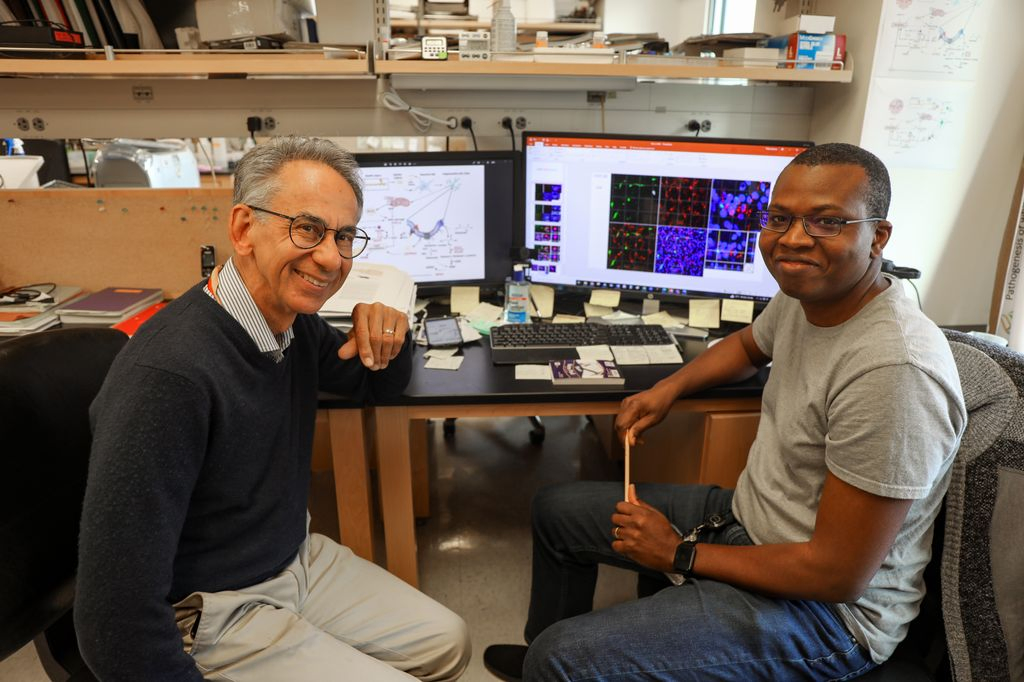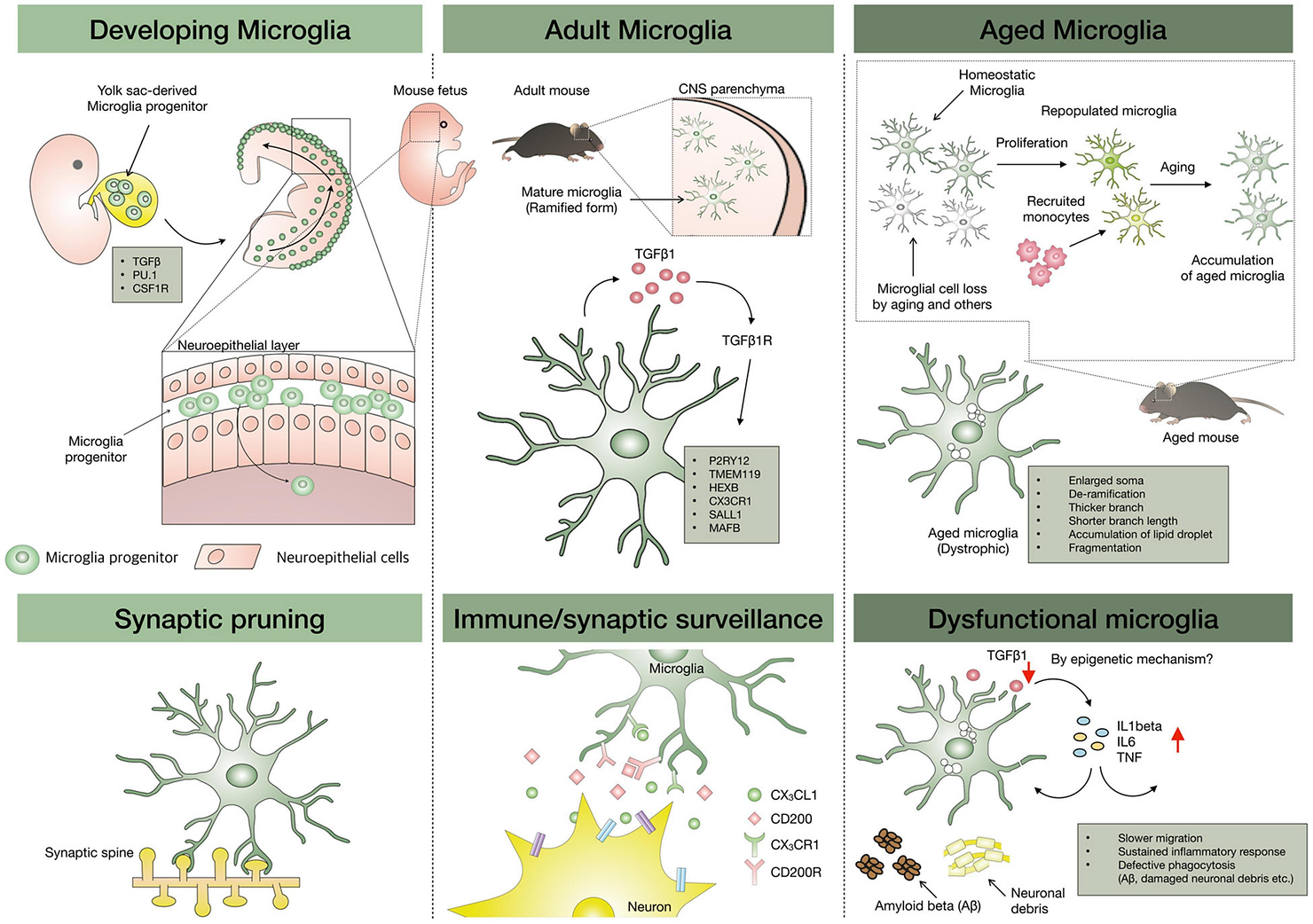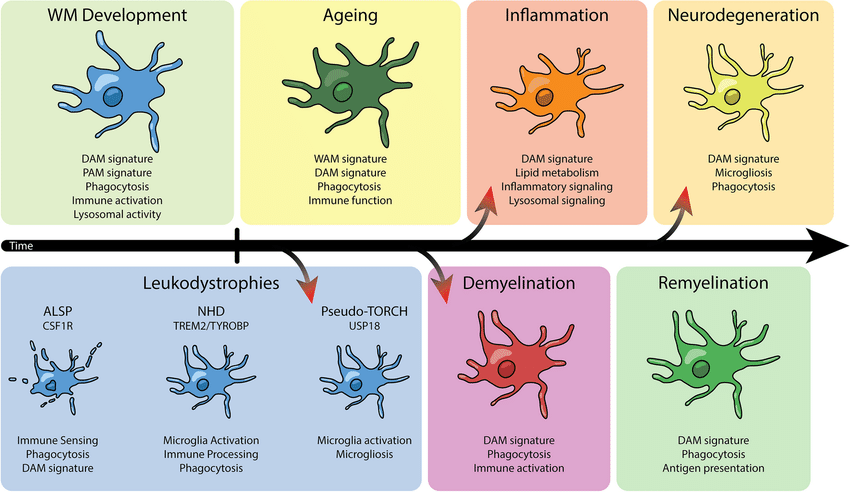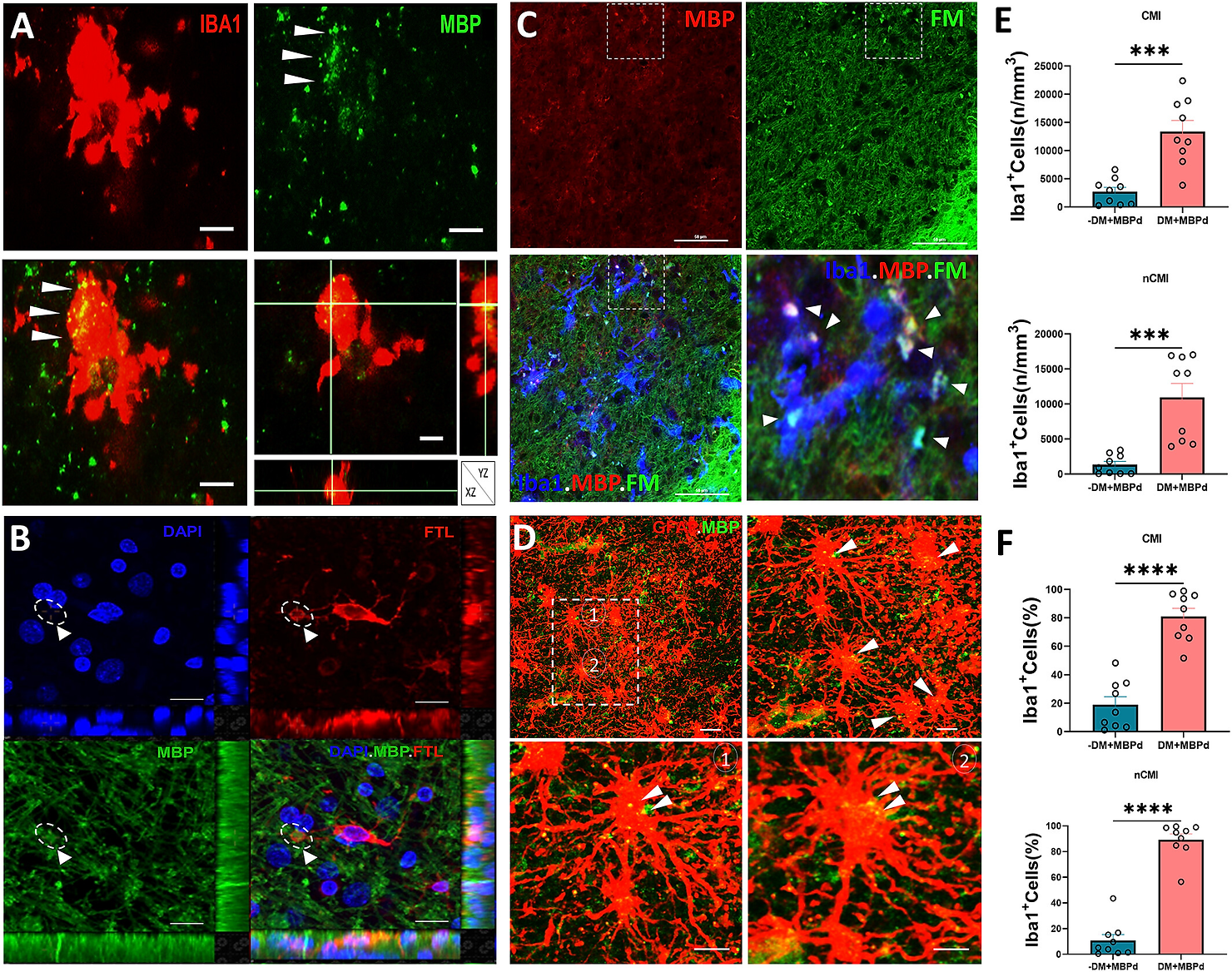New insights into Alzheimer’s disease and vascular dementia are shedding light on a previously uncharted mechanism of cell death, paving the way for innovative research and potential therapies.
A recent study from Oregon Health & Science University (OHSU), published in the journal Annals of Neurology, has identified ferroptosis—an iron-dependent form of cell death—as a key player in the destruction of microglia cells within the brain.
Microglia, the brain’s immune cells, play a critical role in maintaining neural health. These cells act as the brain’s janitors, clearing cellular debris and ensuring a stable neural environment. Their activity becomes especially vital when damage occurs to myelin, the protective coating surrounding nerve fibers.
Microglia step in to remove this debris, especially when myelin, the protective sheath surrounding nerve fibers in the brain, becomes damaged, safeguarding brain function. However, the study shows that the iron buildup driving ferroptosis significantly impairs this essential process, offering new insights into how Alzheimer’s and vascular dementia progress.

However, this recent study has brought to light that the very act of clearing iron-rich myelin results in the destruction of the microglia themselves through ferroptosis. This discovery pivots our understanding of the progression of Alzheimer’s and vascular dementia.
The OHSU research team, under the guidance of senior author and established neuroscientist, Stephen Back, M.D., Ph.D., delved into this study by examining post-mortem human brain tissue from dementia patients.
“This is a major finding,” emphasized Dr. Back, who has an extensive research background in myelin studies, especially concerning developmental delays in premature infants. The current findings, he says, takes this research further by revealing the interplay between neurodegeneration and myelin deterioration.

The innovative technique that made this discovery possible was spearheaded by the study’s lead author, Philip Adeniyi, Ph.D., a postdoctoral researcher in Dr. Back’s laboratory. This cutting-edge method brought into sharp focus the role of microglia in the white matter regions of Alzheimer’s and vascular dementia patients’ brains.
Dr. Back, reflecting on the significance of these findings, remarked, “We’ve missed a major form of cell death in Alzheimer’s disease and vascular dementia. It’s just amazing that we missed this until now.”
It’s a revelation that’s set to transform the way we perceive Alzheimer’s and vascular dementia. Co-author Kiera Degener-O’Brien, M.D., was the first to notice microglial degeneration in tissue samples. Building on this, Adeniyi’s immunofluorescence technique confirmed that it was iron toxicity from myelin fragments leading to this degeneration. In essence, these immune cells were succumbing while performing their protective functions.

Dr. Back highlighted the previously underestimated role of microglia, saying, “Everyone knows that microglia are activated to mediate inflammation. But no one knew that they were dying in such large numbers.”
These findings have broad implications. The progressive decline of microglia may very well be a driving mechanism behind the cognitive deterioration seen in Alzheimer’s and vascular dementia patients. Recognizing this, Dr. Back anticipates a surge of interest from the pharmaceutical industry.
“That’s where the field will go next,” he asserted, hopeful about the development of compounds targeting microglial degeneration.
The starting point of this degenerative cycle likely roots back to repeated episodes of reduced blood flow and diminished oxygen supply to the brain. Factors such as acute stroke or chronic conditions, including hypertension and diabetes, might be contributing culprits.

Dr. Back concluded with a profound thought, “Dementia is a process that goes on for years and years. We have to tackle this from the early days to have an impact so that it doesn’t spin out of control.”
As we stand on the cusp of this breakthrough, the field of dementia research has received a renewed impetus. This discovery, encapsulating the pivotal role of ferroptosis, presents an untapped reservoir of opportunities for scientists, researchers, and pharmaceutical pioneers. Only time will tell how this newfound knowledge shapes the future of dementia care and therapeutics.
Note: Materials provided above by the The Brighter Side of News. Content may be edited for style and length.
Like these kind of feel good stories? Get the Brighter Side of News’ newsletter.
The post Groundbreaking study identifies the cause of Alzheimer’s disease and dementia appeared first on The Brighter Side of News.